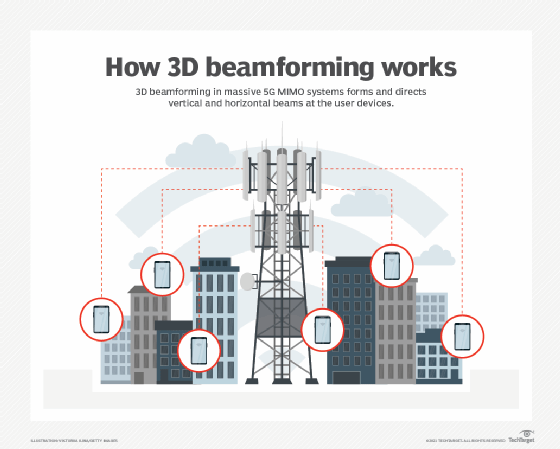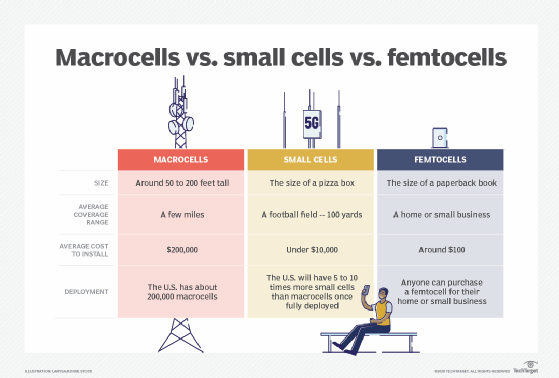spectrum efficiency
What is spectrum efficiency?
Spectrum efficiency describes the amount of data transmitted over a given spectrum or bandwidthwith minimum transmission errors. Also known as spectral efficiency or bandwidth efficiency, a cellular network's spectral efficiency is equivalent to the maximum number of bits of data that can be transmitted to a specified number of users per second while maintaining an acceptable quality of service.
Spectral efficiency in wireless communications speeds is affected by the number of users accessing the network concurrently. In this scenario, the data transfer rate depends on the transmission device's bandwidth and the transmitted signal or the signal-to-noise power ratio. When the signal-to-noise ratio is improved, it also boosts spectral efficiency and channel capacity. To put it simply, more data must be sent over the available spectrum to use it efficiently.
How can the spectrum efficiency of a cellular network be improved?
There are many ways to improve spectral efficiency. However, it is not as simple as adding more antennas, as this can potentially increase interference. To avert any potential interference, massive multiple input, multiple output (MIMO) systems that use beamforming techniques can be used to boost the effectiveness of transmissions.
Beamforming is a radio frequency (RF) management technique in which an access point uses multiple antennas to send out the same signal. The feedback from mobile devices is then analyzed, and the signals are adjusted accordingly to identify the best path they should take to reach mobile devices.
Beamforming techniques are also critical to 5G networks because they help direct and adjust radio waves to make them stronger and more targeted. They can also extend the range of RF transmissions and transmit data directly to the end user.

What is link spectral efficiency?
Link spectral efficiency usually determines the efficiency of the digital modulation approach or lines of code. Sometimes, link spectral efficiency is also analyzed in combination with a forward error correction (FEC) code and other physical layer overheads.
When it comes to link spectral efficiency in wireless networks, larger values do not automatically enhance the overall radio access network's efficiency. This is because high-link spectral efficiency can potentially lead to high-sensitivity crosstalk or to co-channel interference. In most cases, the goodput -- which is similar to throughput -- is typically lower than the maximum throughput because of congestion avoidance, flow control and packet retransmissions.
Wireless networks with Spread spectrum, frequency reuse and FEC reduce spectral efficiency. However, they also reduce the necessary signal-to-noise ratio in comparison to non-spread spectrum techniques.
What is spectrum efficiency in 5G?
According to CTIA, the trade association for wireless communications in the U.S., since 2010, wireless service providers have increased their spectral efficiency by a factor of 42. In the U.S., wireless networks handled approximately 948 million megabytes (MB) for every megahertz (MHz) of spectrum in 2010. Today, they can handle as much as 39.9 billion MB per MHz.
Spectrum efficiency in 5G creates opportunities for network operators that use small cells to densify their networks and reuse the spectrum more frequently. This approach is increasingly popular as it offers capacity improvements and enables a seamless transition from 4G to 5G.
As the channel size increases, so does spectral efficiency. Wide channelization also enables crucial 5G attributes like single-digit latency and speeds up to 100 times faster than those of 4G networks.
Spectral efficiency is important to 5G, as data generation and processing demands increase with the deployment of 5G networks. As such, there will be continuous pressure to use the spectrum more efficiently and effectively to keep pace with the exponential rise in demand.
5G technologies also promise to provide significant gains in spectral efficiency, enabling peak speeds that exceed 30 bits per second (bps) per Hertz (Hz). This is more than double the 15 bps per Hz provided by Long Term Evolution-Advanced technology.
There are three key approaches that address 5G design targets. These include ultra-dense networks, mmWave band with a large bandwidth and massive MIMO that enables high spectrum efficiency.
Network densification can be achieved through a massive deployment of macrocells, microcells and femtocells. These cells enhance network capacity, energy efficiency and coverage performance.

The cell densification model is already popular among wireless cellular networks with LTE-Advanced 4G. In this scenario, they help build multi-tier cellular heterogeneous networks, or HetNets.
To further boost network performance, wireless HetNets comprising remote radio heads and wireless relays can be used. This relaying and multihop communication approach promises to be an essential element of the 5G wireless architecture.
As 5G handles various traffic demands with improved spectral efficiency, we can expect it to take mobile communications and IoT to the next level.




